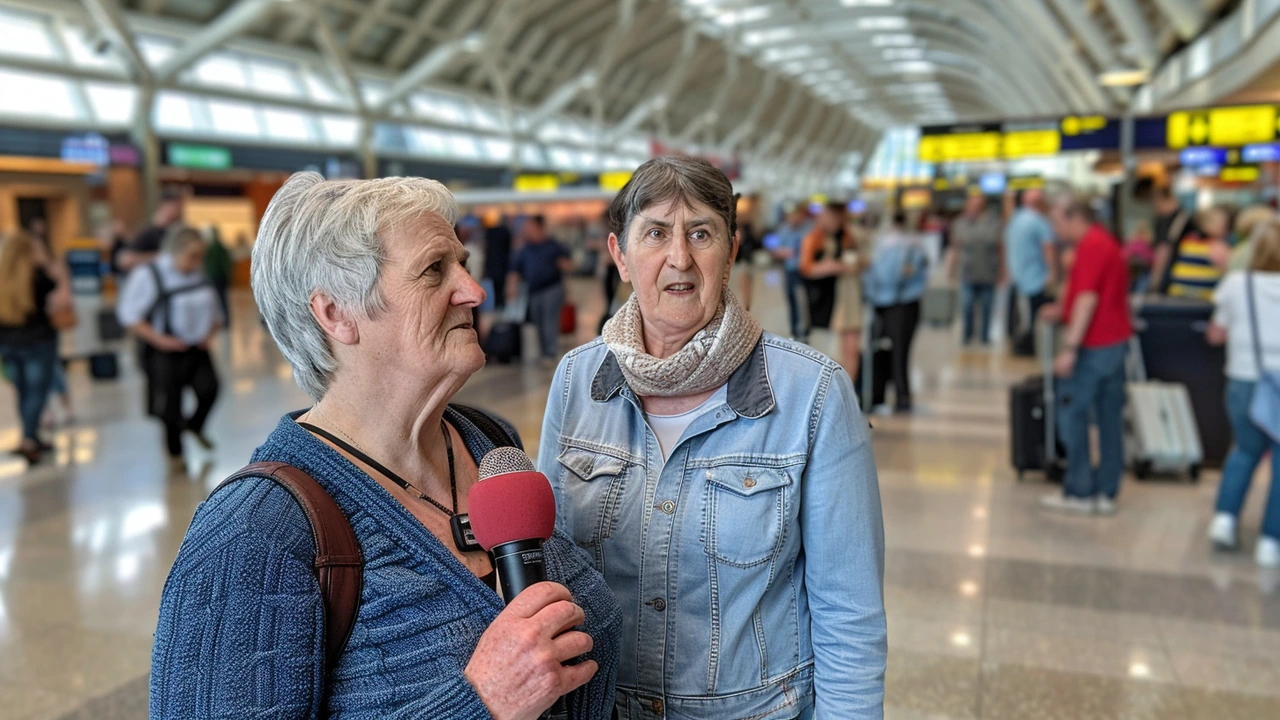Qatar Airways Flight Encounters Extreme Turbulence
On what began as a routine flight from Doha to Dublin, passengers aboard Qatar Airways found themselves gripped by fear as the plane encountered severe turbulence. The extreme weather disturbance left twelve passengers injured, prompting urgent questions about airplane safety amid increasingly common reports of turbulent flights.
For those on board, the experience was nothing short of terrifying. The plane, cruising peacefully at high altitude, suddenly plunged, only to climb back several hundred feet, before dropping yet again. This cycle repeated several times, causing a sense of helplessness and sheer panic among those inside.
The Sequence of Events
According to witnesses, the cabin was thrown into chaos the moment the turbulence hit. Overhead bins flung open and luggage tumbled out, hurtling down the cabin. Oxygen masks dangled disconcertingly from the ceiling as passengers clung to their seats, bracing for the worst. Some reported that drinks splashed against the ceiling and food trays were decimated.
One passenger described it as the most harrowing experience of their life, capturing the atmosphere of panic and distress. Babies cried inconsolably, and adults shouted for safety measures. The sudden plunge of the aircraft, followed by rapid ascents, only added to the sense of dread.

Injuries and Immediate Response
The extent of the injuries suffered during the incident ranged from minor bruises to more severe strains. The flight crew acted quickly to assist those in need, providing first aid and attempting to calm the rattled passengers. Despite the chaos, the cabin crew's composed and professional demeanor was appreciated by many on board.
On landing, medical personnel were on standby, ready to provide further treatment. Passengers were taken to local hospitals for a thorough check-up. In total, twelve passengers needed medical attention, spotlighting the potential severity of such incidents.
Comparisons with Recent Incidents
This harrowing ordeal on Qatar Airways follows closely behind another turbulence-related incident on a Singapore Airlines flight. That particular flight saw 104 passengers injured and tragically resulted in the death of a passenger with a preexisting heart condition.
With both instances happening in close succession, concerns are mounting about air travel safety amid unpredictable weather patterns. Experts suggest that climate change may be playing a role in increasing the frequency and severity of turbulent conditions, posing a significant challenge to the aviation industry.

Community and Airline Reactions
The reaction to these incidents has been far-reaching. Aviation authorities and regulatory bodies are under pressure to reassess current safety protocols. Passengers and the broader public are demanding more rigorous measures to ensure safety in the skies. Discussions focus on pilot training, aircraft resilience, and the effectiveness of in-flight emergency responses.
Airlines, on their part, are tasked with the delicate balance of reassuring passengers while implementing improved safety measures. Qatar Airways has stated that it is conducting a thorough investigation into the incident, promising greater transparency and steps to prevent such occurrences in the future.
Looking Forward
While aviation remains one of the safest modes of transport statistically, these incidents shed light on the inherent vulnerabilities and the need for continuous improvement. Passengers today are more informed and expect clear communication and stringent safety standards.
In conclusion, these back-to-back incidents of extreme turbulence underscore the unpredictability of air travel and the importance of comprehensive safety measures. Even as technology advances, the human element of ensuring passenger safety through rigorous training and preparedness remains crucial. Both airlines and passengers must navigate this challenging landscape with a focus on safety, communication, and trust.







Pooja Shree.k May 28, 2024
I can't believe this happened again. The plane just dropped like a stone. I've flown dozens of times and never felt anything like it. No warning, no announcement, just pure panic. The oxygen masks dangling like creepy decorations. I'm not even sure I want to fly again.
Vasudev Singh May 30, 2024
It's heartbreaking to hear how many people got hurt, especially when you consider how many families were on that flight. I know people say flying is statistically safe, but when you're in the middle of that kind of chaos, statistics don't mean much. The crew did their best, and that's commendable, but we need better systems-like real-time turbulence detection that actually works, not just the outdated radar we're stuck with. Climate change is making the skies more unpredictable, and airlines can't keep pretending it's just bad luck. We need mandatory retraining for pilots on extreme turbulence response, better seatbelt enforcement, and maybe even redesigned overhead bins that don't turn into death traps. This isn't just about one airline-it's about every single flight that's out there right now, and we owe it to the passengers to do better.
Akshay Srivastava May 31, 2024
The notion that turbulence is increasing due to climate change is not merely speculative-it is empirically supported by peer-reviewed atmospheric studies from NASA and the University of Reading. Jet stream instability, exacerbated by tropospheric warming gradients, directly correlates with increased clear-air turbulence at cruising altitudes. The aviation industry's failure to integrate these findings into operational protocols is not negligence-it is systemic complacency. Furthermore, the reliance on reactive rather than predictive safety measures reveals a fundamental epistemological flaw in current risk management paradigms. Passengers are not passengers; they are data points in a failing system. Until the industry adopts AI-driven turbulence forecasting with real-time adaptive routing, these incidents will continue to escalate in frequency and severity.
Amar Khan June 2, 2024
i just saw the video of the drinks flying up to the ceiling and i cried. like... seriously. i had a panic attack just watching it. i dont even like flying but i gotta go visit my mom next month and now im scared to death. i think i'll take the train even if it takes 3 days. who even designed these bins?? they should be locked or something. why is no one talking about this??
Roopa Shankar June 3, 2024
To everyone who's scared after reading this-your fear is valid, but don’t let it paralyze you. The crew saved lives that day with their calm. The plane didn’t break apart. It held together. That’s not luck-that’s engineering. We need to demand better, yes, but we also need to trust the professionals who train for this. Let’s push for better tech, better training, better communication-but don’t stop flying. The skies are still the safest place to be. Just be prepared. Wear your seatbelt like your life depends on it-because it does. And if you’re nervous, bring noise-canceling headphones and a stress ball. Small things help. You’ve got this.